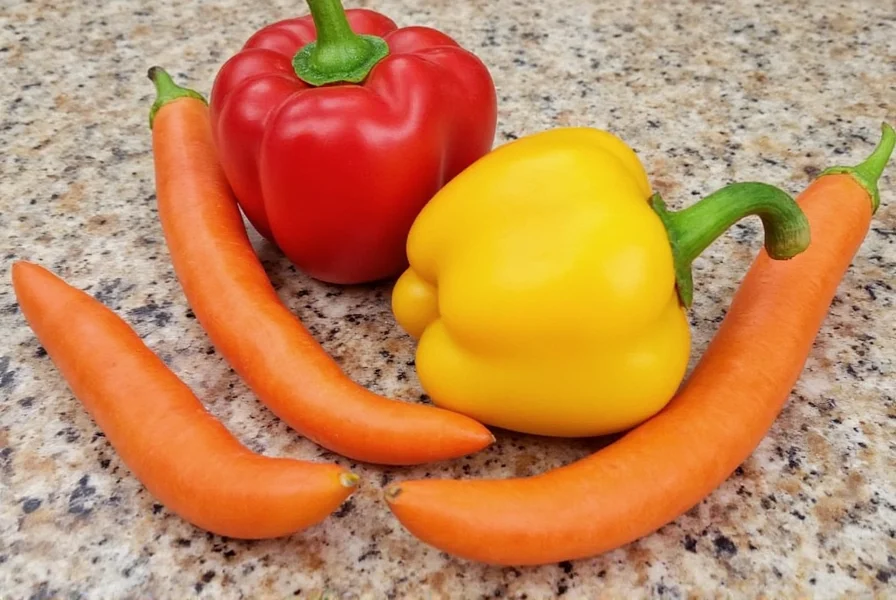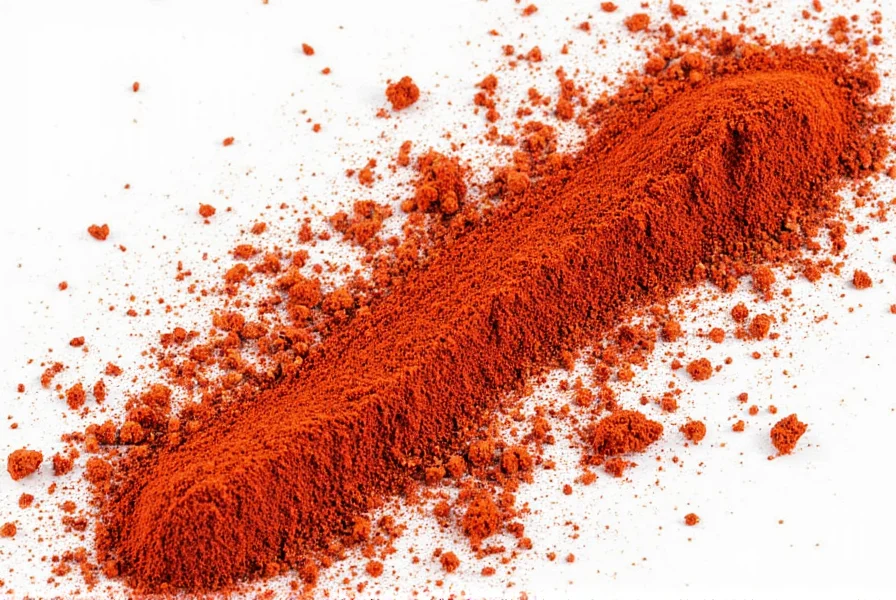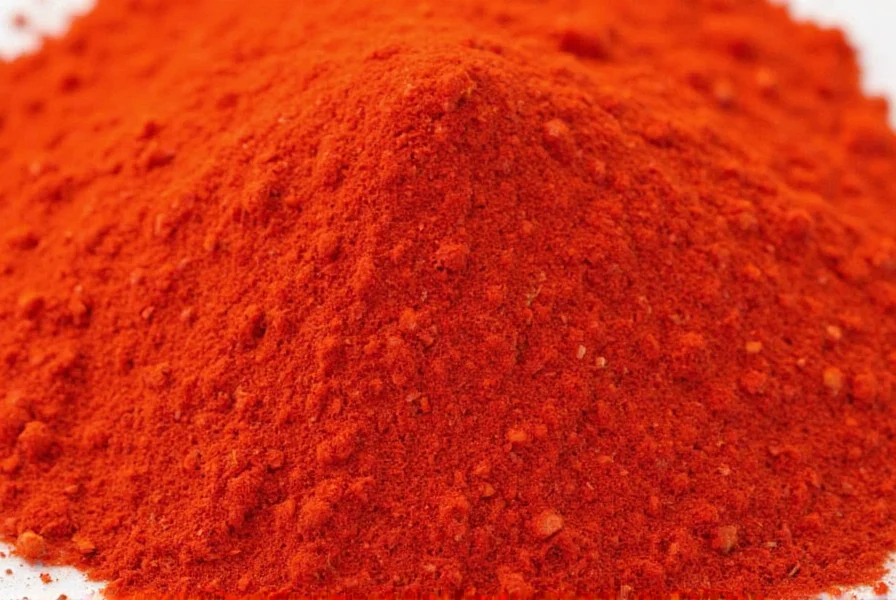Paprika appears as a vibrant red powder ranging from bright orange-red to deep brick red depending on the variety. Sweet paprika typically displays a bright, almost fluorescent orange-red hue, while smoked paprika shows deeper, darker red tones. The powder has a fine, uniform texture similar to other ground spices but generally milder in heat. Fresh, high-quality paprika maintains its rich color without fading or clumping when stored properly.
Understanding what paprika looks like is essential for cooks who want to identify this versatile spice correctly. This guide details the visual characteristics that distinguish paprika from other spices, helping you select the right variety for your culinary needs.
Visual Characteristics of Paprika
Paprika's appearance varies by type but shares consistent visual traits across all varieties. The spice presents as a fine, dry powder with uniform texture. When freshly opened, high-quality paprika shows vivid, intense color—not dull or faded. Properly stored paprika flows freely without clumping, indicating it hasn't absorbed moisture.
The most distinctive feature is its rich red color spectrum. Depending on the pepper variety and processing method, paprika ranges across different red tones:
| Type of Paprika | Color Description | Visual Texture |
|---|---|---|
| Sweet Paprika | Bright orange-red, almost fluorescent | Fine, uniform powder without specks |
| Smoked Paprika | Deep brick red to mahogany | Slightly darker with subtle variations |
| Hot Paprika | Vibrant red with possible darker flecks | May contain small dark specks from seeds |
Different Types and Their Visual Differences
Not all paprika looks identical. The visual distinctions between varieties help you select the appropriate type for specific recipes:
Sweet Paprika Appearance
Sweet paprika (often called Hungarian paprika) shows the brightest color of all varieties. Its hue resembles a vibrant orange-red that almost seems to glow. When poured, it creates a fine cloud of brilliantly colored powder. This variety typically has the most uniform color with no dark specks, making it ideal for dishes where visual appeal matters.

Smoked Paprika Visual Characteristics
Smoked paprika (pimentón) has a noticeably deeper color, ranging from rich brick red to dark mahogany. The traditional smoking process gives it a slightly darker appearance than sweet varieties. When examined closely, you might notice subtle variations in color intensity within the powder, reflecting the different peppers used in production. This visual characteristic helps identify authentic smoked paprika versus artificially colored imitations.
Hot Paprika Identification
Hot paprika maintains a vibrant red color but may contain tiny dark specks from the inclusion of pepper seeds and membranes. These specks are normal and indicate the presence of capsaicin-rich components that provide heat. The overall color remains bright red, but the presence of darker elements distinguishes it from milder varieties. When considering what does paprika look like in hot varieties, these specks are a key visual identifier.
How to Identify Quality Paprika by Appearance
When selecting paprika, visual inspection provides important quality indicators:
- Color intensity: High-quality paprika has a rich, vibrant color. Dull or faded red suggests old or improperly stored product
- Texture uniformity: The powder should be fine and consistent without large particles or clumps
- Color consistency: Premium paprika maintains a uniform color throughout the container
- Moisture signs: Any evidence of clumping indicates moisture exposure, which degrades quality
Understanding what paprika looks like when fresh ensures you're using the best quality spice. Properly stored paprika maintains its vivid color for 6-12 months, gradually fading as it ages. When evaluating how to identify paprika visually, remember that authentic paprika maintains a consistent red spectrum without brown or orange undertones that might indicate fillers.
Common Visual Misidentifications
Many people confuse paprika with similar-looking spices. Here's how to distinguish paprika from other red powders:
- Chili powder: Often darker and may contain visible flecks of other spices like cumin or oregano
- Cayenne pepper: Typically brighter red with a more intense hue and finer texture
- Tomato powder: Has a more orange-brown color rather than true red
- Beet powder: Usually darker with purple undertones
When determining what color is paprika powder, remember that authentic paprika maintains a consistent red spectrum without brown or orange undertones that might indicate fillers or adulteration. This visual distinction is crucial when following recipes that specify paprika specifically.
How Appearance Affects Culinary Use
The visual characteristics of paprika directly impact its culinary applications. Sweet paprika's bright color makes it ideal for dishes where vibrant red hue is desired without significant heat. Smoked paprika's deeper color contributes to the visual appeal of traditional dishes like paella and chorizo.
When added to foods, paprika creates a distinctive red-orange tint. In liquid dishes, it disperses to create a uniform color, while in dry rubs it provides attractive speckling. Understanding how paprika looks in its raw form helps cooks anticipate how it will affect the appearance of finished dishes. This knowledge proves valuable when wondering what does paprika look like after it's been incorporated into recipes.

Storage Tips to Maintain Paprika's Appearance
Proper storage preserves paprika's vibrant color and fine texture:
- Keep in an airtight container away from light and heat
- Use dark glass or opaque containers to prevent color fading
- Avoid storing above the stove where heat and moisture can degrade quality
- Check periodically for color changes that indicate aging
Fresh paprika should pour freely and maintain its intense color. If your paprika has turned brownish or developed clumps, it's time to replace it. Learning how to tell if paprika is fresh by looking at it ensures optimal flavor and visual impact in your cooking.
Frequently Asked Questions
What color should paprika be?
Paprika should be a vibrant red ranging from bright orange-red (for sweet varieties) to deep brick red or mahogany (for smoked varieties). High-quality paprika has an intense, rich color without brown or dull undertones.
How can you tell if paprika is fresh by looking at it?
Fresh paprika has a vibrant, intense color and fine, uniform texture. If it appears faded, dull, or has developed clumps, it's likely old or has been exposed to moisture. Properly stored fresh paprika flows freely without sticking together.
What's the difference in appearance between sweet and smoked paprika?
Sweet paprika has a brighter, more orange-red hue that appears almost fluorescent, while smoked paprika has a deeper, darker red color ranging from brick red to mahogany. Smoked paprika may also show subtle variations in color intensity due to the smoking process.
Why does my paprika have dark specks in it?
Dark specks in paprika typically indicate it's a hot variety that includes some seeds and membranes from the peppers. These components contain capsaicin, which provides heat. The specks are normal in hot paprika but shouldn't be present in sweet varieties.
How does paprika's appearance change when used in cooking?
When added to dishes, paprika creates a distinctive red-orange tint. In liquid dishes, it disperses to create a uniform color, while in dry rubs it provides attractive speckling. The vibrant color remains stable through cooking, though prolonged high heat may slightly diminish intensity.











 浙公网安备
33010002000092号
浙公网安备
33010002000092号 浙B2-20120091-4
浙B2-20120091-4